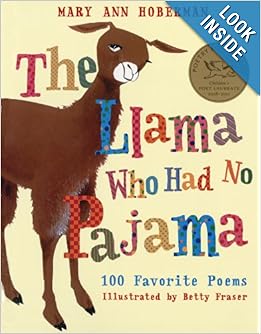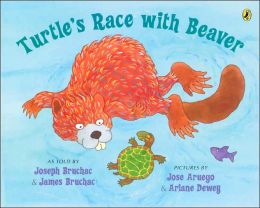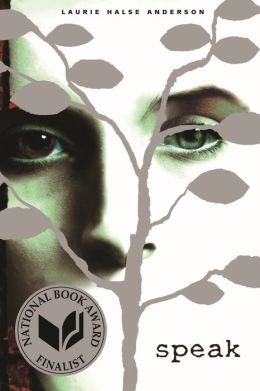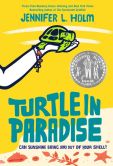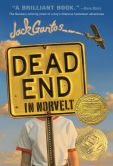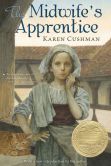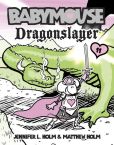
http://img1.imagesbn.com/p/9780375857126_p0_v1_s114x166.JPG
Holm, Jennifer. 2009. Babymouse: Dragonslayer. Ill. Matthew Holm. New York: Random House. ISBN: 978-0-375-95712-3.
Babymouse: Dragonslayer is the story of spunky, silly Babymouse taking on her personal dragon, math.
If you have yet to meet Babymouse, you can make her acquaintance here:
http://www.youtube.com/watch?v=LPWcnSuYFoM.
Jennifer and Matthew Holm are a brother and sister team who have created characters according to Booklist that are "...so genuine they can pass for real kids." Virtually every reader will find something they can relate to in the Babymouse series. Babymouse: Dragonslayer is a fun-filled adventure into the perils of being a Mathlete and competing for the coveted Golden Slide Rule. Babymouse does not enjoy math, but once her teacher puts her on the team she sets out to do her best. The teacher who leads the team encourages her by saying, "Don't be discouraged. Just because you're not good at something, it doesn't mean you have to be terrible at it, either." With those wise words ringing in her ears, Babymouse becomes friends with the other Mathletes and works through her fears with their support and a few adventures played out in her vibrant fantasy life.
Reluctant readers will be drawn into Babymouse's adventures both real and imagined as they recognize themselves and their friends in the school setting Babymouse and her friends inhabit. Older readers will laugh as Babymouse's imagination takes her into great works of literature including The Lion, The Witch, and the Wardrobe and The Hobbit. Finally, the big day arrives and Babymouse's team "The Fighting Fractions" faces their opponent "The Owlgorithms". Round after round leads to the final challenge where Babymouse must solve a word problem to win the day. That is a lucky break because Babymouse happens to be very good at reading! She does indeed save the day by answering correctly and returning the Golden Slide Rule to her school's trophy case.
Jennifer Holm has been awarded three Newbery Honors for her novels, Our Only May Amelia, Penny from Heaven, and Turtle in Paradise. She is a New York Times bestselling author.
Matthew Holm is a graphic designer and a freelance writer who also collaborates with Jennifer on a series of graphic novels featuring a character called Squish.
Learn more about Jennifer and Matt here: http://www.randomhouse.com/teachers/video/jennifer-and-matt-holm/ and here; http://www.jenniferholm.com/p/babymouse.html.
Starred Review, The Horn Book: "Nobody puts Babymouse in the corner!"
Booklist: "Cute, smart, sassy Babymouse is fun and funny, and this book, like its predecessors, will draw reluctant readers as well as Babymouse fans."
Babymouse: Dragonslayer is the eleventh book in the Babymouse series, so readers may enjoy reading the first ten books and comparing her adventures. More information about the series can be found at the Random House website http://www.randomhouse.com/kids/babymouse/homepage.htm. The website also has information about the writing and design of graphic novels that can be used with students in a writing and illustrating workshop.The Babymouse series can also be used to broach topics of friendship, bullying, imagination, overcoming fears, and managing the daily dramas of school with upper elementary and middle school students.
Barnes and Noble. Editorial reviews: http://www.barnesandnoble.com/w/dragonslayer-jennifer-l-holm/1101356016?ean=9780375857126. (Accessed November 27, 2013.)

